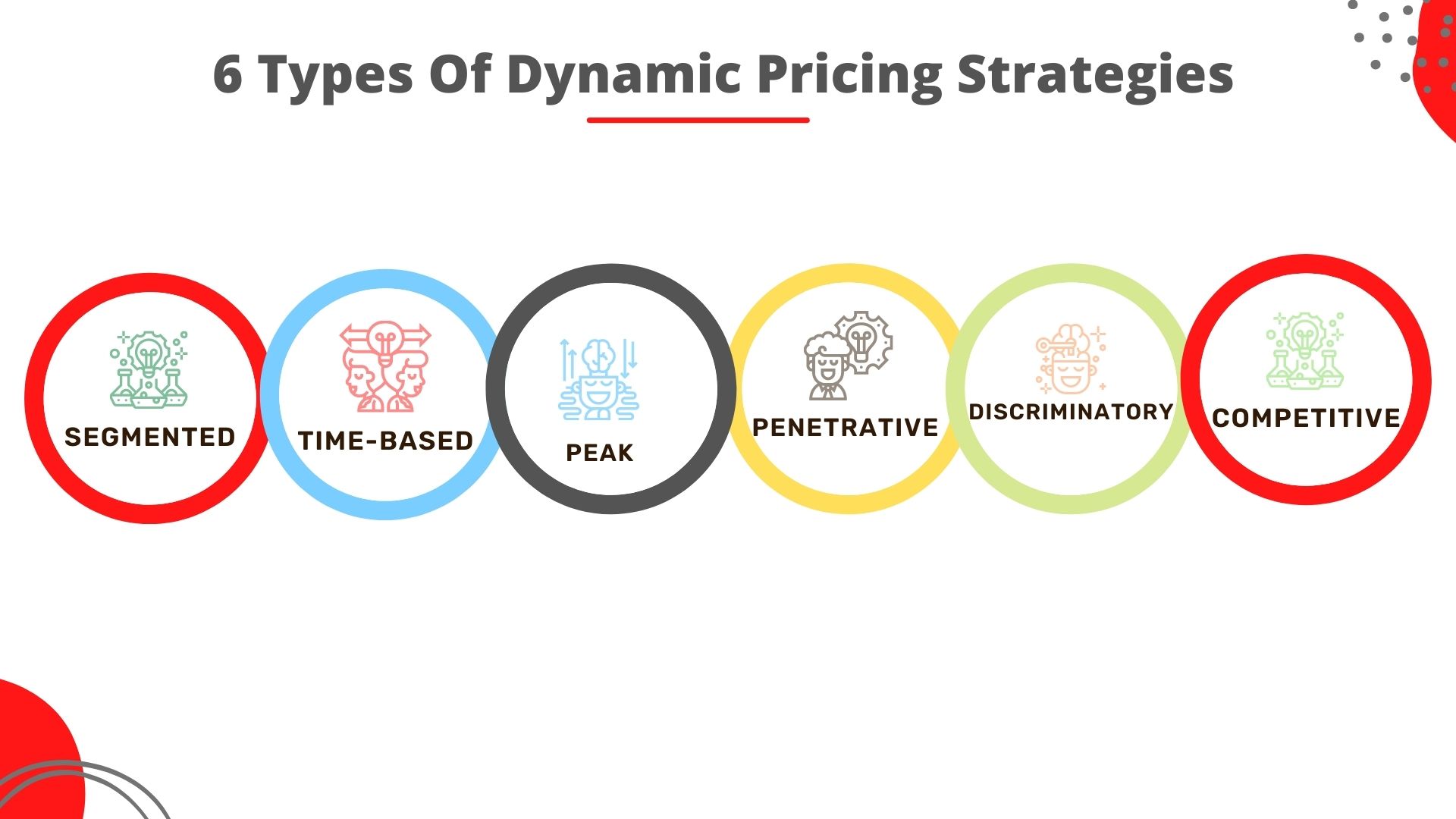This may surprise you, but the answer is not the COVID-19 pandemic. It is retail’s overarching archenemy, e-commerce.
In this blog post though, we shall explain how traditional retail can overcome the challenge posed by e-commerce, turning one of its most powerful weapons against it – that of dynamic pricing.
Table of Contents
- What Is Dynamic Pricing
- Why Should Traditional Retail Also Deploy Dynamic Pricing?
- How Can Retailers Implement Dynamic Pricing?
- Types Of Dynamic Pricing Strategies
If you are a traditional retailer anywhere in the world, you need to speak to our experts to get a lowdown on how dynamic pricing can help you. Call now
What is Dynamic Pricing?
Dynamic pricing tools take into account a combination of historical and real-time market data to offer price suggestions.
The data can range from past performance to geography to seasons or even local events.
The algorithm makes frequent changes to rates based on such data inputs, thus helping companies stay competitive at all times. Such pricing can be based on a group of people or on the passage of time.
Dynamic pricing is most suited for highly competitive industries which enjoy elastic demand for their offerings.
Airlines, hospitality, events, transportation, and most recently e-commerce have successfully implemented dynamic pricing.
The latter has always been around, but the underlying technology for its implementation is what has changed and evolved over time.
Looking to Scale Your Retail Operations using AI?
Why Should Traditional Retail also Deploy Dynamic Pricing?
This is a very important question because tackling e-commerce is merely scratching the surface. Traditional retail has always operated on fixed pricing.
Fixed pricing means that there is no flexibility for retailers to attract more customers and build brand loyalty.
Simply lowering product prices is also detrimental to their business eventually, since it brings a roundabout change in customers’ overall expectations.
Also, fixed pricing holds businesses back on all the potential incremental profits that can be earned if dynamic pricing is implemented to take advantage of the shifts in customer loyalties, demand and supply, and the broader external environment.
It also allows businesses to carry out a huge number of transactions without having to worry about reduced margins.
Various studies show that dynamic pricing has proven itself to grow revenue by up to 30% and increase profit margins by about 11%.
These numbers cannot be ignored by retailers fighting for every cent and dollar. The potential to grow is seemingly limitless.
Here’s what a Forbes report had to say about the future of dynamic pricing:
“In the not-so-distant future, virtually nothing will have a fixed price. Say goodbye to the familiar $1.99 and hello to a price between, say, $1.39 and $2.17, based on changing supply and demand. This is the phenomenon of dynamic pricing, and it is already rapidly changing the way we buy goods and services and dramatically reshaping our economy”
“Companies are using artificial intelligence (AI), machine learning (ML), and automation to balance demand with supply in near real-time. For the first time, all the economic forces at work (the “hand”) are finally visible in the data. As a result, for the first time ever, businesses no longer have to use guesswork to set their prices: They can use data to understand what their prices should be and automatically change as supply and demand fluctuate.”
Dynamic pricing can help retailers to reduce waste by enabling them to sell “unsellable” products.
For instance, electronic products are being replaced by newer models, or grocery and consumer perishables nearing their expiration.
Retail outlets discard such perishables worth thousands of dollars daily.
Giving customers incentives by way of reduced prices to purchase such items will significantly increase their salvage value to the retailers.
AI-based dynamic pricing engines can correctly identify the exact price needed to move products, protecting sales and profit margins.
Another major advantage of dynamic pricing is its ability to establish strong brand loyalty.
For example, if a dynamic pricing model is effectively incorporated into a firm’s CDP (customer data platform), its AI, ML, and predictive modeling capabilities can provide retailers the opportunity to generate attractive and compelling offers for their customers.
The dynamic pricing engine can be used to generate user-specific offers in the form of discounts, coupons & vouchers, and bundles for exactly those products on which the customers are most likely to spend.
It makes a very solid use case for retargeting customers who can be encouraged to revisit the stores and make follow-up purchases.
Now that we have covered the what and the why, it is time for the how.
How can Retailers Implement Dynamic Pricing?
The first thing you need to know is that dynamic pricing does not require some over-the-top, fancy, or complex software. Here’s what a McKinsey report says about it:
“Dynamic pricing isn’t just for travel companies or e-commerce giants, and it doesn’t necessarily require ultra-sophisticated software that changes every product’s price multiple times a day. Even traditional retailers can reap tremendous benefits from merchant-informed, data-driven algorithms that recommend price changes for selected products at some level of frequency.”
“Despite the competitive advantage that dynamic pricing can confer, few omnichannel retailers have developed this capability. Some are only now starting to explore the potential of dynamic pricing. Other retailers conducted half-hearted and poorly planned pilots that, unsurprisingly, had little impact and thus failed to get the organization’s buy-in.”
This suggests two crucial things: First, traditional retailers have the chance of gaining a first-mover advantage since their rival counterparts are either not doing it at all or perhaps not doing it right. Second, dynamic pricing is not as hard to implement as everybody thinks it is.
The process starts with the cleansing and organizing of enterprise-wide data. Smaller businesses will find it easier to do so and probably do it in-house. As for medium and large-scale retailers, unstructured data can pose to be a challenge as there is a lot of it.
Express Analytics data analytics services provide thorough and streamlined data governance capabilities to cleanse, organize and unify unstructured data.
The next step would be to create tailor-made machine learning algorithms and effective response models to kickstart the process of building an effective dynamic pricing engine.
One of the most important things that these algorithms will take care of is the accurate extrapolation of the price elasticity of demand of each and every product w.r.t each and every customer segment.
Price elasticity of demand, in simple terms, is a variable that denotes how much the aggregate demand of a product will change because of a change in its price.
Price elasticity is influenced by parameters like the availability of alternatives, the portion of the customer’s budget that must be assigned for the purchase of an item, degree of necessity, and brand loyalty.
Needless to say, this is the most important factor to consider when pricing a product.
For instance, if you price a product lower than the average market price in the hopes of gaining more market share, and it turns out to be less elastic, you will just end up losing profit margins.
Moreover, elasticity, when computed separately for different customer segments, can help in setting prices differently for different customers.
Of course, we also need to make sure that we do not violate any laws & regulations regarding price discrimination.
In other words, while keeping the base price the same, promotional offers and discounts can be provided to customer segments that are more elastic while the lesser elastic segments can be charged a higher price, all the while without violating any pricing regulations.
That is just the tip of the iceberg. In a similar fashion, the dynamic pricing engine, coupled with the above-mentioned algorithms, also takes into consideration the income elasticity of demand and the cross elasticity of demand.
Looking to Scale Your Retail Operations using AI?
What are Electronic Shelf Labels and How They Can Help
As traditional retail is much more than just software and virtual algorithms when compared to e-commerce, it is only natural that a physical piece of hardware also is deployed to facilitate the dynamic pricing engines.
Therefore, one of the greatest weapons in traditional retail’s dynamic pricing arsenal is Electronic Shelf Labels (ESL).
As the name suggests, these are digital price labels that can be set up at any retail outlet with the listed products.
The advent of ESLs makes it easy for retailers, from supermarkets to electronic vendors, to implement dynamic pricing that will finally help level the playing field with e-commerce vendors.
ESLs help create a synergy relationship between the dynamic pricing engine, price displays, and the Point-of-Sales (POS) systems.
Influenced by inventory, purchase history, and competitor pricing, ESLs help pricing managers know how to change prices. What it does is change the store digitally. Doing so, helps physical stores to compete with online sellers.
The decisive and final step in this process is to choose a strategy. There are various types of dynamic pricing strategies and different strategies work best for different businesses:
6 Types of Dynamic Pricing Strategies
- Segmented pricing
- Time-based pricing
- Peak pricing
- Penetrative pricing
- Discriminatory pricing
- Competitive Pricing

Choosing the right fit for your retail business is crucial as it will increase the effectiveness of your dynamic pricing engine tenfold.


No comments yet.